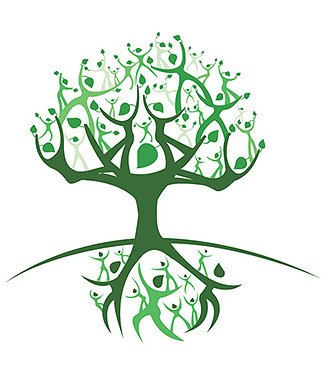December 22: Back pain Myths
November 30th, 2022 On World Spine Day in October this year, the British Chiropractic Association explained the most common misconceptions about back pain and debunked the most common myths surrounding the condition.
On World Spine Day in October this year, the British Chiropractic Association explained the most common misconceptions about back pain and debunked the most common myths surrounding the condition.On World Spine Day in October this year, the British Chiropractic Association explained the most common misconceptions about back pain and debunked the most common myths surrounding the condition.
Myth: Back pain means damage or injury.
In a lot of cases, back pain doesn’t mean damage or injury. We like to use the analogy of a paper cut. Everyone knows how much a paper cut hurts – it’s a lot of pain but minimum damage. The level of pain you experience is very rarely proportional to the amount of injury sustained to the back.
Added to this, more pain doesn’t mean that more damage has been caused. Your actual pain level is a reflection of the threat level that your brain perceives itself to be going under. Your brain creates this level of pain based on all of the information it receives from your body, your environment and internally as well, such as memory of past experiences of certain situations and beliefs about pain. If your brain deems there’s a threat, it will create pain to alert you that there is a problem and that you need to make a change. It’s our in-built protective mechanism, which will create pain even if there is only a chance of potential damage.
If your pain persists, it’s always advisable to seek a professional opinion from a registered health professional.
Myth: Painkillers will speed up your recovery.
Most back pain is mechanical in nature so even though painkillers can be helpful, some sort of hands-on treatment or movement or exercise is more likely to manage the problem than painkillers.
Painkillers can be useful when it comes to reducing pain in the short term and so helping people to start moving earlier after onset of back pain, and that movement through the pain can be helpful. But we would recommend more conservative therapies, such as use of a heat/cold pack, manual therapy (massage, spinal manipulation, or acupuncture), gentle home stretching, short walks within your pain tolerance; activities that help your back to relax, pain to reduce and allow you to return to higher levels of activity. Too much rest is the enemy when it comes to back pain.
Myth: Lifting causes more back pain than sitting.
Bending and lifting are often portrayed as causes of back pain and sometimes we avoid them in fear of damaging our backs. If you pick up something awkwardly, however, it’s more likely to cause a mild strain or a sprain than an injury in most cases.
Different activities cause more back pain for some people than others. Some might experience more pain with sitting, others with lifting. For those who sit for a long period of time, I recommend moving and changing your posture every 20-30 minutes so you’re not stuck in the same position for too long. Most people believe that bad posture causes back pain, but actually posture causes a relatively low load on your back. It’s the absence of activity that causes pain. If you have back pain already, you my find some postures are more relieving than others when sitting; a perfect posture does not exist.
Those who lift should focus on gradual strength training over time, to build up and get used to the weights they’re lifting, not only in the gym but also at home and at work. It is not that lifting is a cause of back pain, it is because we are unaccustomed to the loads that we are lifting or how often we are lifting them, whether this is lifting boxes at home or weights in the gym.
Myth: You need a scan to diagnose the cause of back pain.
There is no scan available that can tell you where your pain is. Imaging or scanning is just one piece of the puzzle when diagnosing the cause of back pain. It is very common to find changes such as ‘degeneration’ on scan reports, research has shown that these are found in people with back pain and even without back pain, so are not necessarily the cause of your pain and are often part of completely normal aging like ‘wrinkles of the spine’. Somebody’s clinical history and a physical assessment can help to create a more complete picture when it comes to determining what is causing somebody’s back pain.
Myth: Exercise, especially weight training, will make back pain worse.
Exercise generally has been shown to be the best intervention for treating low back pain in acute back pain (six weeks) and chronic back pain (three months and over). There are also recent studies on the long-term safety of lots of different exercises, including weight training, and it’s been shown to have great benefits.
If you’re weight training and your back pain is getting worse, it likely comes back to going up through the weights too quickly and lifting beyond your capacity. In this case, we would recommend graded exercise over time, slowing building up the amount and intensity.
If you find that you’re experiencing an increasing amount of back pain and exercise isn’t helping, it‘s always worth going to a registered health professional, such as a chiropractor, to treat your pain and to find a better exercise for you.
Myth: Doing too much causes wear and tear.
Our bodies thrive on being used and are more likely to ‘rust’ than to ‘wear out’. Several research pieces show that marathon runners have less knee wear and tear in later life than people who don’t run.
The original article contained all the supporting extensive studies that have been carried out in each of these statements. These can be found on the British Chiropractic Associations website.
Many of our patients visit Mark at Well Adjusted Health as they really prefer the gentle techniques that he practices. If you have a specific question regarding any pain or problem areas, or would like to book a Free 15 minute consultation for you or your family please call Well Adjusted Health on 01903 892171
Myth: Back pain means damage or injury.
In a lot of cases, back pain doesn’t mean damage or injury. We like to use the analogy of a paper cut. Everyone knows how much a paper cut hurts – it’s a lot of pain but minimum damage. The level of pain you experience is very rarely proportional to the amount of injury sustained to the back.
Added to this, more pain doesn’t mean that more damage has been caused. Your actual pain level is a reflection of the threat level that your brain perceives itself to be going under. Your brain creates this level of pain based on all of the information it receives from your body, your environment and internally as well, such as memory of past experiences of certain situations and beliefs about pain. If your brain deems there’s a threat, it will create pain to alert you that there is a problem and that you need to make a change. It’s our in-built protective mechanism, which will create pain even if there is only a chance of potential damage.
If your pain persists, it’s always advisable to seek a professional opinion from a registered health professional.
Myth: Painkillers will speed up your recovery.
Most back pain is mechanical in nature so even though painkillers can be helpful, some sort of hands-on treatment or movement or exercise is more likely to manage the problem than painkillers.
Painkillers can be useful when it comes to reducing pain in the short term and so helping people to start moving earlier after onset of back pain, and that movement through the pain can be helpful. But we would recommend more conservative therapies, such as use of a heat/cold pack, manual therapy (massage, spinal manipulation, or acupuncture), gentle home stretching, short walks within your pain tolerance; activities that help your back to relax, pain to reduce and allow you to return to higher levels of activity. Too much rest is the enemy when it comes to back pain.
Myth: Lifting causes more back pain than sitting.
Bending and lifting are often portrayed as causes of back pain and sometimes we avoid them in fear of damaging our backs. If you pick up something awkwardly, however, it’s more likely to cause a mild strain or a sprain than an injury in most cases.
Different activities cause more back pain for some people than others. Some might experience more pain with sitting, others with lifting. For those who sit for a long period of time, I recommend moving and changing your posture every 20-30 minutes so you’re not stuck in the same position for too long. Most people believe that bad posture causes back pain, but actually posture causes a relatively low load on your back. It’s the absence of activity that causes pain. If you have back pain already, you my find some postures are more relieving than others when sitting; a perfect posture does not exist.
Those who lift should focus on gradual strength training over time, to build up and get used to the weights they’re lifting, not only in the gym but also at home and at work. It is not that lifting is a cause of back pain, it is because we are unaccustomed to the loads that we are lifting or how often we are lifting them, whether this is lifting boxes at home or weights in the gym.
Myth: You need a scan to diagnose the cause of back pain.
There is no scan available that can tell you where your pain is. Imaging or scanning is just one piece of the puzzle when diagnosing the cause of back pain. It is very common to find changes such as ‘degeneration’ on scan reports, research has shown that these are found in people with back pain and even without back pain, so are not necessarily the cause of your pain and are often part of completely normal aging like ‘wrinkles of the spine’. Somebody’s clinical history and a physical assessment can help to create a more complete picture when it comes to determining what is causing somebody’s back pain.
Myth: Exercise, especially weight training, will make back pain worse.
Exercise generally has been shown to be the best intervention for treating low back pain in acute back pain (six weeks) and chronic back pain (three months and over). There are also recent studies on the long-term safety of lots of different exercises, including weight training, and it’s been shown to have great benefits.
If you’re weight training and your back pain is getting worse, it likely comes back to going up through the weights too quickly and lifting beyond your capacity. In this case, we would recommend graded exercise over time, slowing building up the amount and intensity.
If you find that you’re experiencing an increasing amount of back pain and exercise isn’t helping, it‘s always worth going to a registered health professional, such as a chiropractor, to treat your pain and to find a better exercise for you.
Myth: Doing too much causes wear and tear.
Our bodies thrive on being used and are more likely to ‘rust’ than to ‘wear out’. Several research pieces show that marathon runners have less knee wear and tear in later life than people who don’t run.
The original article contained all the supporting extensive studies that have been carried out in each of these statements. These can be found on the British Chiropractic Associations website.
Many of our patients visit Mark at Well Adjusted Health as they really prefer the gentle techniques that he practices. If you have a specific question regarding any pain or problem areas, or would like to book a Free 15 minute consultation for you or your family please call Well Adjusted Health on 01903 892171
Comments (0)
No comments have been submitted yet.Why not be the first to send us your thoughts
Leave A Comment
Thank you for your comments, they will appear shortly once approved.
Recent Posts
Have You Seen...






